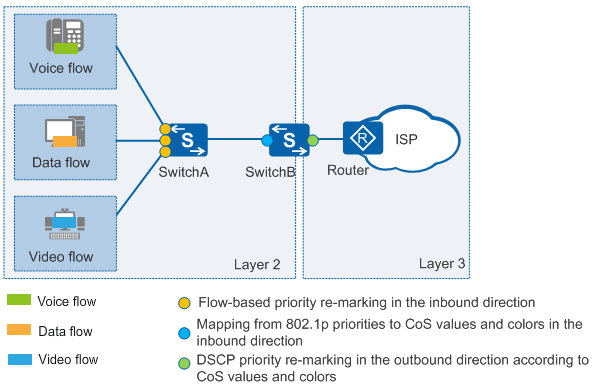Application Scenarios for Priority Mapping
Networking Requirements
The network shown in Figure 1 provides voice, video, and data services (listed in descending order of priority). When different service flows arrive at the ISP network, devices on the ISP network must identify priorities of the services to provide differentiated services.
The precedence field in a packet depends on the network type. For example, packets on a Layer 2 network carry the 802.1p field and those on a Layer 3 network carry the DSCP field. When packets arrive at a device, the device maps packet priorities to CoS values and colors, and provides different QoS services according to the CoS values and colors. When packets leave the device, the device re-marks the precedence fields of the packets based on the CoS values and colors. The downstream device can then provide differentiated services based on packet priorities.
- On SwitchA, configure a traffic policy in the inbound direction to re-mark voice, video, and data packets with different 802.1p priorities. Voice, video, and data services are in descending order of priority.
- Configure SwitchB to map 802.1p priorities of incoming packets to CoS values and colors. SwitchB then provides differentiated services based on the CoS values and colors.
- Configure SwitchB to re-mark outgoing packets with DSCP priorities based on CoS values and colors. In this way, the service packets are provided differentiated services on the Layer 3 network based on DSCP priorities.
